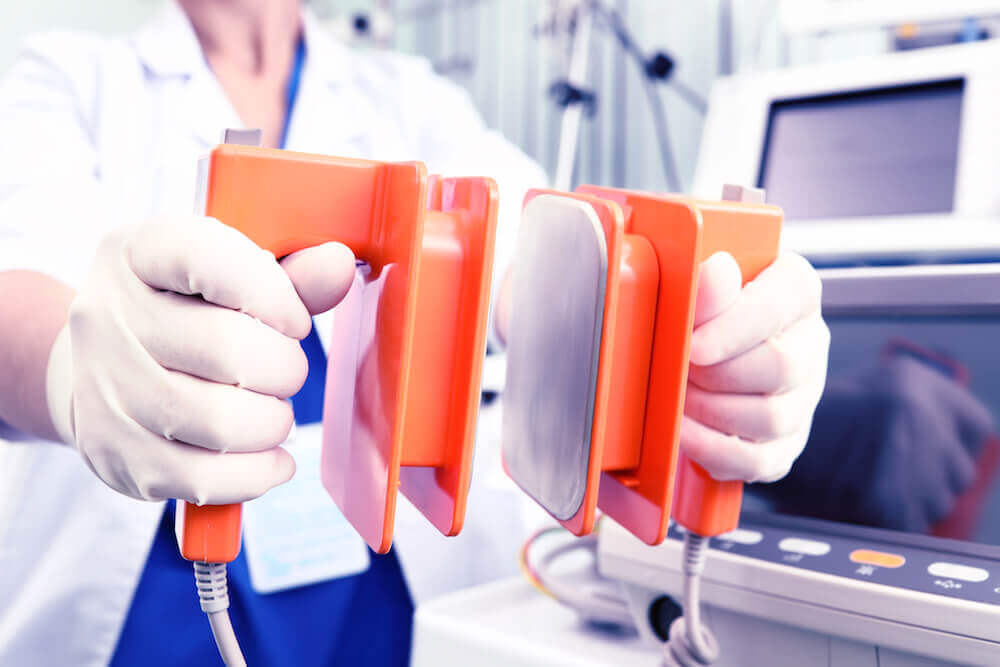Are ACLS certifications and BLS certifications similar? Absolutely. Are they the same thing? Far from it. Here's why:
When you strip everything down and simply view them in their most basic form, both ACLS (Advanced Cardiac Life Support) and BLS (Basic Life Support) possess the same objective – learning the proper techniques to aid in saving the life of someone in cardiac arrest. However, there are many differences between the two courses that regulate how this overarching objective is met.
The foremost distinction between ACLS and BLS is the level of advancement between the two. Essentially, ACLS is a more advanced and sophisticated course that builds upon the basic fundamentals you develop during BLS – as both of the names suggest. However, there’s much more to it than that. In this article, we’ll explain the main purpose of both an ACLS certification course and a BLS certification course. More importantly, we’ll pinpoint the main features that distinguish the two from each other.
Audience
BLS is intended to be for anyone who needs to know the basic principles of CPR, AED usage, and other primary methods of lifesaving skills. BLS is often performed in out-of-hospital situations, and may not always be performed by a healthcare professional. While BLS is often required for medical professionals, BLS / CPR courses are commonly completed by teachers, coaches, lifeguards, babysitters, and more. Conversely, ACLS is designed specifically for healthcare professionals. This includes physicians, nurses, anesthesiologists, paramedics, dentists, and more.
Related Article: Does BLS Include First Aid and CPR?
Background of Medical Knowledge Needed
Having some medical knowledge is helpful going into both courses, but it’s not necessarily required for BLS. ACLS, on the other hand, demands at least a basic foundation of medical knowledge that will allow you to absorb the material and successfully complete the course. It is common for ACLS participants to have completed a BLS Certification prior to beginning their ACLS course – and ACLS Certification courses often include a review of BLS course material. For example, understanding basic ECGs is a major component of any ACLS exam. While you will spend time studying them during the course, it’s important that you enter the exam already having a basic familiarity with ECGs and how to read them.
Pharmaceuticals
Whereas a BLS Certification doesn’t give the provider recommendations for administering medications, an ACLS certification does. During your ACLS course, you will study multiple pharmaceutical drugs, the situations that call for particular pharmaceuticals, correct dosages, and recommendations for drug administration.
Tools/Resources
Both BLS and ACLS teach the proper techniques of using an automated external defibrillator (AED). ACLS Certification courses cover several additional tools and resources that can be used in a life-threatening situation. These tools include ECGs, intravenous medications, intubation materials, emergency-scenario algorithms, and more.
While BLS is not as extensive as ACLS, both courses certainly have their place with their respective audiences. To learn more about each respective course, see below:
Additional ACLS Resources
- Related Article: How to Choose an Online ACLS Provider
- Related Article: Common Questions Asked About Online ACLS Certifications
- Related Article: How to Pass Your Online ACLS Certification Exam
Additional BLS Resources
- Related Article: The Ultimate BLS Cheatsheet
- Related Article: If You Can Pass This BLS Pretest, You're Ready To Pass The Actual Exam
Electronic Medical Certification (eMedCert) provides healthcare professionals with convenient, credible, affordable, and user-friendly online certification courses. eMedCert provides a fully online alternative to traditional ACLS, PALS, and BLS certifications and recertifications to help you advance your career without inconveniencing your work or lifestyle.
We want to make sure you have the best experience possible with our courses. If you need assistance or have any further questions about online healthcare certifications, connect with our team by sending us a message.
